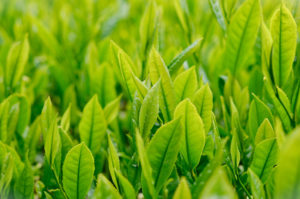
Kurasawa (くらさわ) is a cultivar usually made into sencha, but occasionally it can also be found as a black tea.
It’s not widely available, and unfortunately there’s few information about it online.
History of the Kurasawa cultivar
This cultivar is the result of selection of Yabukita seedlings that were bred naturally in 1967 at the Shizuoka prefecture Tea Research Station.
Its original name is Shizu-7111.
As a side note, the 7000 series of tea cultivars such as Shizu-7132 were developed in Shizuoka starting out with Yabukita tea plants.
Characteristics of Kurasawa
Kurasawa is a normal budding cultivar that exhibits energetic growth and a high yield at harvest.
It has a high astringency and a refreshing aroma.


June 23, 2021
Buen día Ricardo. Siempre es un gusto saludarte y leer tus artículos sobre el mundo del Té. En esta nota me has sorprendido gratamente y mayor interés sobre la diversidad de cultivares. Un cordial abrazo.
(Translation: Good day Ricardo. It’s always a pleasure to greet you and read your articles about tea. This post has surprised me, now I have a deeper interest in the diversity of cultivars.)
June 23, 2021
Hola Griselda, gracias por tu saludo.
Es muy interesante este tema, pero aún falta mucho para que sea más popular, por el momento no es tan fácil de comprar té japonés de diferentes variedades de la planta de té.
(Translation: Hi Griselda, thanks for your comment. It’s a very interesting subject, but there’s still a long way before it becomes popular. At the moment, it isn’t as easy to buy Japanese teas from different cultivars.)
February 4, 2022
Hello Ricardo,
perhaps it’s just a a characteristic of this specific batch, but it may be interesting.
My first infusion (60°C, 1 min) of Kurasawa appears like a light, mild little tea – but it has a unexpected high caffeine-content; at least it awakes me perfectly when i’m sleepy; in contrast the second infusion (60°, ininite mins) is almost bitter, like a strong black tea; as i used to like East Frisian tea, i also enjoy this bitter soup.
So – not for everyone, but i myself never let run short my supplies
😉
February 4, 2022
Hi Bernhard, thanks for your comment.
I’ve never had an East Frisian tea, but would love to try it.
In the end, you should prepare in a matter that brings out the taste that you want. If you like bitter green tea, then higher temperature and higher time would work.